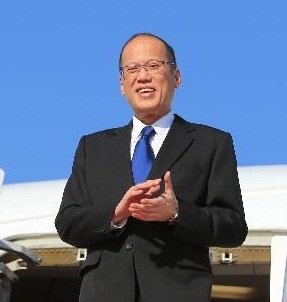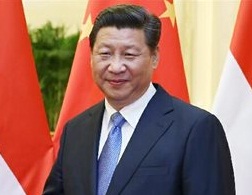

This is the first time that Aquino and Chinese President Xi Jinping will have a chance for greetings more than just “hello” and “goodbye”.
Aquino has announced there is no scheduled bilateral meeting between him and Xi during the two-day Beijing summit.
The Department of Foreign Affairs was working on a pull-aside meeting (about 10 to 15 minutes) on the sidelines of the Summit but if even that is not possible they see a chance “to break the ice” in the frosty relations between the two countries during the turnover of the hosting Leaders Meeting towards the end of the meeting on Tuesday.
Sources said during the turnover, Aquino will thank Xi for the invitation to the Beijing meeting and will extend to him the invitation to the Manila APEC summit in November 2015.
If there’s a chance for a pull-aside, Aquino would like to suggest a resumption of communication between the Philippines and China which practically stopped since April 2012 during the standoff in Panatag or Scarborough Shoal.
Aquino has noted other countries like Vietnam has maintained communications with China despite the territorial dispute.
In a recent forum with the Foreign Correspondents Association of the Philippines, he was asked about a possible hotline with the Chinese leader. He said, “The diplomatic side of me says: ‘Let’s explore that. Why not do that, in the sense that we do have that with the other ASEAN countries and it really has redounded to quick action on potential incidents between our neighbors and ourselves.’ Now, we’d want to do that also with China to prevent any misunderstanding and miscalculations.”
Philippine-China relations is strained not only by the Philippine filing before the UN Court to declare as illegal China’s 9-dashed line map but the “shame China” strategy adopted by the DFA under Foreign Secretary Albert del Rosario.
At the height of the Scarborough Shoal standoff, Del Rosario accused China’s Ambassador Ma Keqing of “duplicity.” Communications between DFA and the Chinese Embassy practically stopped with the DFA going through U.S. State Department to relay its message to Beijing and China sought the help of a backchannel, Sen. Antonio Trillanes III, to relay its message to Aquino.
Since then, the Philippines has internationalized the issue against China soliciting support from other countries for its U.N. case. China, on the other hand, gives the Philippines cold treatment.
In September last year, China spurned Aquino’s plan to attend the 10th ASEAN-China Expo (CAEXPO) in Nanning, where the Philippines was the country of honor, and meet with Xi.
Even at the ministerial level, China has snubbed the Philippines. In the last Asean Regional Forum in Myanmar, Chinese Foreign Minister Wang Yi met with also all his counterparts including Japan, with whom China has a serious territorial conflict, but not with Del Rosario.
It is not clear whether Aquino’s desire to resume communications with China could lead to a major shift in the foreign relations strategy of the Philippines.
The Philippines has always refused talking with China on the South China territorial disputes bilaterally (which China wants) insisting that it be done with other ASEAN countries or at least other claimant countries.
The opportunity for that ice breaker is in today’s APEC.
Be First to Comment